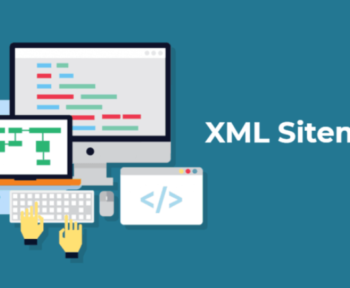Table of Contents
What is contextual targeting?
Contextual targeting refers to placing a display ad on websites that are directly related to the product being sold in the ad. Therefore, the content of the ad is directly related to the content of the site/page.
Just go through this detailed video for in-depth learning about contextual targeting.
Remember searching for tour packages in a country and being hit with a banner display showing specific flight prices on the same website? This is a statement about you.
Search engines also use this technology to place ads on their results pages. This is done by comparing the keywords in the search query with the ad content.
The contextual targeting is to use session data information to triangulate the user’s intentions and interests, not to use data that has been collected, stored, and analyzed for some time about that user. With the enforcement of the GDPR and CCPA regulations to protect the strict use and privacy of personal data.
the demand for contextual targeting is increasing. Awareness has now grown from consumers around the world and there is growing public and regulatory pressure on the industry to limit the collection of consumer data. Therefore, cookie-based advertising is disrupting the goal, and many Internet browsers are also involved in restricting the use of cookies.
Contextual targeting, on the other hand, uses session information, such as the website a user is browsing, to identify an individual’s intentions and interests. Obtaining data that is detailed and based on user behavior rather than direct user information is contextualized in line with public and regulatory sentiments regarding privacy. Wow!
According to data from “An Insider’s Look at Media, Brand Safety and Partnerships Report from Sizemake”, 87% of marketers plan to scale the contextual target and find a new audience completely.
Contextual Targeting Key Highlights
The process of matching ads to relevant sites on the display network using your keywords or elements, among other things.
- Here’s how it works: Google’s system analyzes the content of each webpage to identify its central theme, then matches it with your ad using your keyword and theme options, your language and location target, recent browsing history of visitors, and more.
- Google Ads uses contextual targeting when the ad group contains keywords or elements and its campaign is set up to show ads on the display network.
How do contextual Ads work?

Let’s get down to the actual deal. How are contextual ads placed and what is behind them?
As mentioned earlier, the concept used here is hyper-targeted advertising. Advertisements are placed on relevant websites or blogs by selecting the appropriate keywords and linking them to the content available on the Website.
Google Ads analyzes content to understand the main point, matches relevant keywords, topics, demographics, users, and their browsing habits, and ranks accordingly.
So users do not have to search for you, but their browsing history and real-time data allow Google Ad Sense to put dynamic content in front of them.
For example, you may have noticed that YouTube ads show relevant products at the right time. Imagine the effect that the user will get by watching a short video related to your product while browsing through the relevant content!
Process
The following are the main steps to follow during contextual targeting:
Keyword selection: Target keywords, as well as elements and phrases, are added to display network ad groups.
Google Ads analyzes keywords and links them to matching websites. The software analyzes various features such as links, page structure, content, images, etc. displayed on the site. So the ads matched the central theme of the website.
Advertisements are Placed
While the steps described above are the basic process of presenting contextual advertising, the use of advanced technology and behavioral data has made it much more advanced.
Benefits of contextual targeting

Gone are the days of traditional web advertising. There are many benefits to contextual targeting.These include:
1. Unlike behavioral data, contextual targeting is less dependent on personal information. It has become a safer and better system for many companies that have to comply with regulations such as GDPR.
2. Contextual advertising can significantly increase purchases because they are effective for specific types of content.
3. Contextual ads increase the value of content
4. Because contextual ads are designed specifically for an audience interested in the topic, they are less annoying than traditional banner ads.
While contextual targeting is a priority tool for companies that want to reach their segmented audience, it does not come with its own challenges. Learn new advertising terms.
For starters, some products and concepts for a specific goal are very common, and choosing a group of customers can be harmful to others. In addition, the process requires careful consideration of keywords and content. Incidents of poor pairs are often noted. Finally, there are issues with frequency capping (which limits the total number of visits the user can make to the ad) and its implementation is difficult to maintain.
What is the difference between contextual targeting and behavioral targeting?
While contextual targeting is a very important tool in the advertising world, behavioral targeting is another method that cannot be ignored.
Behavioral advertising is the display of ads to a select group of users based on their online behavior.
Data is collected exclusively on users’ browsing habits. These include:
- Number and type of frequently visited websites
- Time spent on each site
- Clicked page type
- Date of visit
- Website chat
Behavioral data is tracked using HTTP requests or Flash cookies, where each user is identified using a cookie. After collecting enough data, users are classified into categories based on their behavior.
Hope You liked this information. Don’t forget to share and leave comments. Thank You





